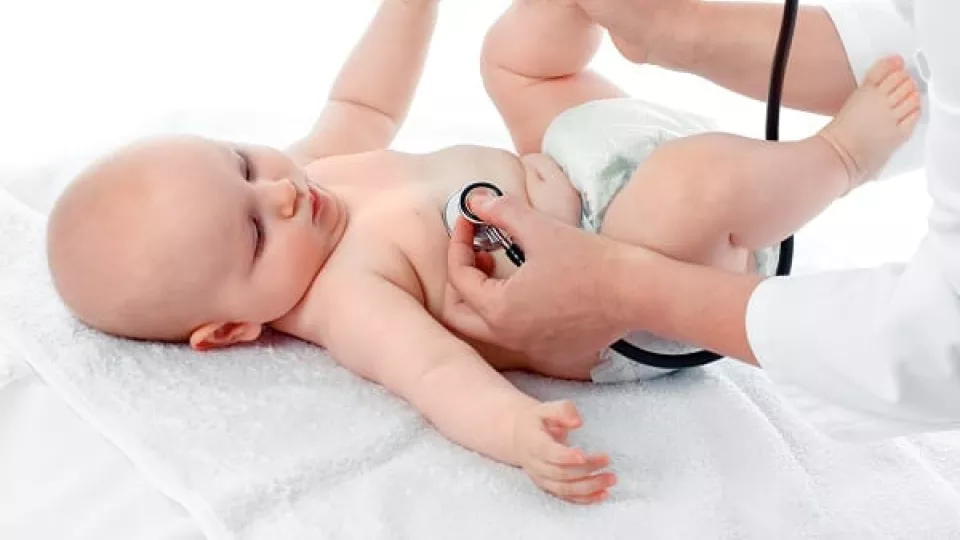
Newborn Screening Uncovers Hidden Genetic Disorders
When your baby was born you likely heard a loud cry and examined your baby to make sure he/she had a full set of adorable fingers and toes. But just imagine a few days after you arrive home, your phone rings: your baby has screened positive for a genetic disorder.
How can a seemingly healthy child have a genetic disorder? Divya Vats, MD, medical director of the Newborn Screening Program at Children’s Hospital Los Angeles (CHLA) and is a staff physician at the Children’s Hospital Los Angeles-Santa Monica Outpatient Care Center explains how newborn screening works and why it can prevent lifelong disability—and even save a child’s life.
What is a newborn screening?
Vats: Shortly after birth, before leaving the hospital, every baby has a few drops of blood drawn from his or her heel as part of the state’s newborn screening program. This simple test screens for certain genetic disorders—conditions caused by an absent or defective gene or by a chromosomal aberration.
These conditions can cause health problems, and some can even be fatal without treatment. But they typically aren’t apparent at birth, so the idea is to uncover them through testing—before symptoms arise.
What conditions are screened?
Vats: Every state is different, but in California, more than 50 disorders are screened. Most fall into three categories: metabolic disorders, which affect how your body turns food into energy; endocrine disorders, which affect hormones and glands; and blood disorders.
How are you involved with the program?
Vats: At CHLA, we don’t do the screening, but we provide treatment and genetic counseling to families whose babies test positive for a genetic condition. I specialize in metabolic disorders, so when a baby screens positive for one of those disorders, the pediatrician often refers the child to me.
Why is screening so important? Why not wait until symptoms come up?
Vats: By the time symptoms appear, it can be too late. In the past, some of these children would die suddenly and inexplicably. Others suffered severe mental disability.
A good example is phenylketonuria (PKU). Babies with PKU look like every other baby, but they lack the enzyme that processes a certain amino acid. This amino acid then builds up in the child’s blood over time and causes mental retardation. Once that brain damage has occurred, it’s irreversible.
However, if we know a child has PKU, we can put the child on a special diet from birth and help stave off that damage. Screening can be the difference between a relatively healthy life and severe mental disability.
Can these disorders be cured?
Vats: Currently there is no permanent cure available. But pharmaceutical and dietary measures are available to manage them—often very successfully. With metabolic disorders, the treatment is often a special diet and/or vitamin supplements. When started early, these treatments can enable children to live normal or near-normal lives.
For example, some babies are missing an enzyme that recycles biotin, a B-complex vitamin, in the body. Lack of this enzyme can cause seizures, hearing loss, vision loss and developmental delays. But if we can identify these children when they are newborns, we can treat them with a daily dose of biotin. After treatment, most of these newborns will go on to lead healthy lives. It’s that simple.
There are also new drugs and dietary products available for some of these disorders. Treatment is changing fast as we learn more and new research is conducted.
What if parents don’t have any history of genetic disorders?
Vats: Just because you don’t have the disorder doesn’t mean that you don’t carry a faulty copy of the gene for it. In fact, most children with these disorders are born to parents with no family history of the condition.
Also, sometimes people have such a mild form of a disorder that they don’t even know they have it. More than a few times, we have diagnosed parents with a metabolic disorder after their baby screened positive.
How accurate is the screening?
Vats: The test is designed to be sensitive to avoid false negatives. But on the flip side, false positives can occur. When a screen is positive, we first confirm the result with more testing—usually a blood or urine test.
What services do you provide in Santa Monica?
Vats: In Santa Monica, we do consultations and physical exams, as well as follow-up testing to confirm the screening results. But if babies are already showing symptoms of serious disorders, they often need to go directly to the hospital.
What should parents do if their baby has a positive newborn screen?
Vats: First, don’t panic. The most important thing is to listen to the doctor’s instructions and follow them. Sometimes it’s hard to believe that a healthy-looking baby could have a serious defect, but it’s critical to do the follow-up testing to find out.
It’s an anxious time for parents, but we are here to work with them. Our goal is the same as theirs: to give their child the best chance for a healthy life.
Divya Vats, MD, is medical director of CHLA’s Newborn Screening Program and a staff physician at Children’s Hospital Los Angeles – Santa Monica, which is located at 1301 20th St., Ste. 460, Santa Monica. For appointments, call 310-820-8608. For information, go to chla.org/santamonica.


